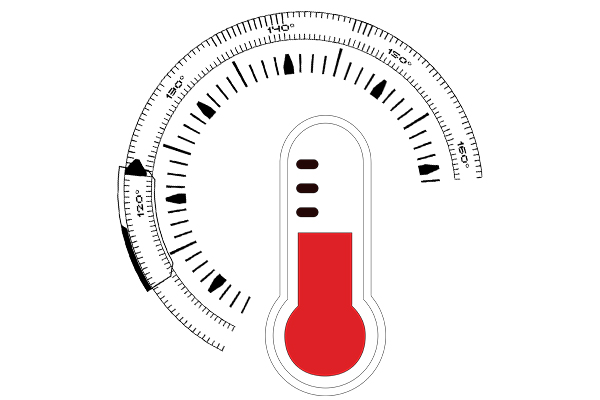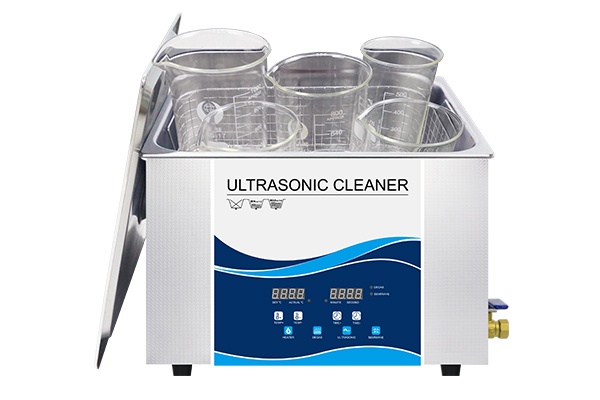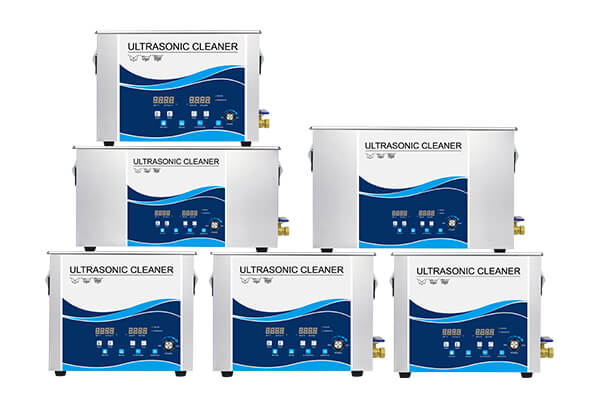Whether you’re cleaning jewelry, glasses, tools, or dental gear, the ultrasonic cleaner has a certain kind of magic: that low hum, the almost invisible fizz of microbubbles, and then—like new—the grime is gone. It’s no wonder more people are turning to these machines for home use. But with that growing popularity comes a surprisingly common question: can you just use dish soap in your ultrasonic cleaner?
The appeal is obvious. Dish soap is everywhere. It’s mild, cheap, and seems to work wonders in a sink of warm water. Why complicate things with specialty solutions, right? In practice, though, the answer isn’t as straightforward as yes or no. Ultrasonic cleaning is a precise process, and while dish soap can work in some cases, it doesn’t always deliver optimal results. Worse, in certain situations, it might even hinder cleaning or shorten your cleaner’s lifespan.
To really answer the question, we need to explore what’s actually happening inside the tank during ultrasonic cleaning. Why does cavitation matter? What do different cleaning agents contribute to that process? And where exactly does dish soap fall on that spectrum?
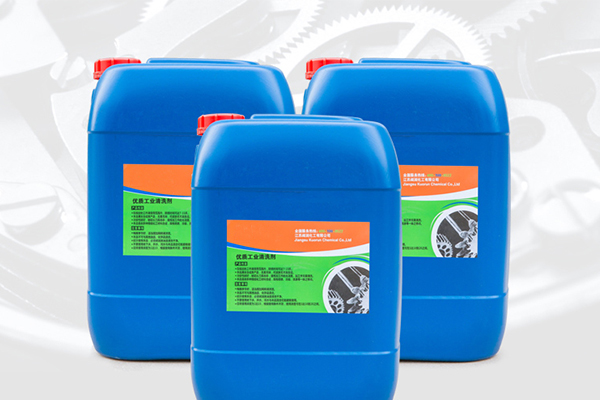
How Ultrasonic Cleaning Really Works—And Why the Solution Matters
Ultrasonic cleaners aren’t magic, but the science behind them feels close. At the heart of the process is cavitation—a rapid formation and collapse of microscopic bubbles in a liquid caused by high-frequency sound waves. These imploding bubbles release intense localized energy, enough to dislodge tiny particles of dirt, grease, or biological residues from surfaces. That’s why ultrasonic cleaners are especially useful for cleaning intricate or delicate items where brushes can’t reach.
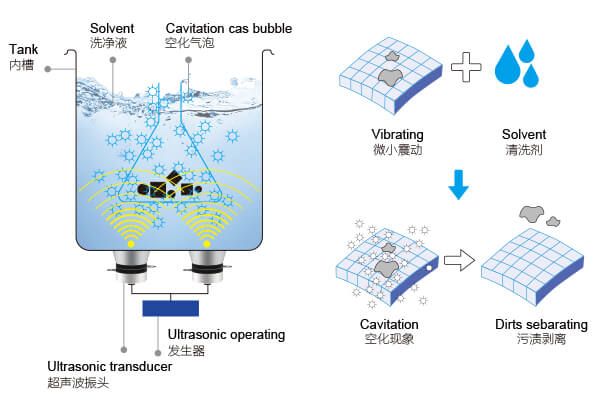
But here’s what often gets missed: cavitation only happens effectively when the liquid conditions are right. The temperature, viscosity, surface tension, and even foaming behavior of the cleaning solution all play critical roles. If the liquid is too foamy or too thick, the cavitation bubbles form unevenly or collapse prematurely, leading to weak cleaning performance.
That’s where detergents come in—not just to dissolve grease, but to enhance the physics of cavitation. Most professional ultrasonic cleaning solutions are carefully formulated with the right surfactants and additives to promote bubble formation without excessive foaming, and to break down specific types of contaminants—like carbon deposits, biological material, oils, or oxidation—depending on the task.
Dish soap, in contrast, is optimized for something entirely different: scrubbing with human hands. It’s designed to create foam, lubricate dishes, and emulsify grease under warm water—not to work at microscopic scale under the unique stresses of ultrasonic waves. So while you can sometimes use it in a pinch, the performance and long-term effects can vary wildly.
And then there’s the question of compatibility—not just with your items, but with the machine itself. Some ingredients in dish soap, especially in scented or colored variants, may leave residues on transducers or interfere with electronics over time.
Dish Soap in Ultrasonic Cleaners: Helpful Hack or Hidden Risk?
It’s tempting to think: if dish soap can clean your greasy pots and pans, why not your jewelry or eyeglasses? After all, it’s cheap, easy to find, and already sitting by your sink. And truthfully, in certain cases, it can work—if you use the right type, the right concentration, and on the right items. But there’s a lot more nuance hiding beneath the bubbles.
Let’s unpack the potential advantages first, because yes, dish soap does have a few redeeming qualities in the context of ultrasonic cleaning:
- Mild surfactants: Dish soaps are designed to cut through oils and food residue gently. That means they’re typically non-corrosive and safe on skin—and in many cases, safe on soft metals, plastic, and coated glass.
- Convenient: No need to shop online or worry about running out of specialty cleaner. A few drops and warm water, and you’re ready to go.
- Budget-friendly: For casual users or one-time cleanings, it’s hard to beat the price tag.
But—and it’s a big but—those conveniences come at a cost if you’re not careful.
Dish soaps are not engineered for cavitation dynamics. Their formulas tend to produce foam, and foam is the enemy of ultrasonic cleaning. Why? Because foam absorbs ultrasonic energy. Instead of cavitation bubbles forming and imploding on your item’s surface, the energy is lost in frothy layers at the top. That means less cleaning power, especially in tight areas like chain links, hinges, or textured surfaces.
There’s also the matter of residue. Many consumer dish soaps contain moisturizers, colorants, and perfumes that can cling to your items or leave a film inside your cleaner tank—especially problematic for precision equipment like labware or optics.
And finally, dish soap isn’t chemically tailored to remove rust, carbon deposits, or oxidation. If you’re cleaning mechanical parts, surgical tools, or old jewelry, the wrong soap won’t just clean poorly—it could make things worse by trapping particles or causing spotting.
So can you use dish soap? Yes, but only with care.
When Dish Soap Works—and When It Doesn’t
There’s a reason some people swear by dish soap in their ultrasonic cleaner—and why others avoid it completely. It comes down to context: what you’re cleaning, how often you’re doing it, and how precise the result needs to be.
If you’re cleaning simple, durable household items, like eyeglasses, plastic combs, or stainless steel cutlery, a few drops of mild, unscented dish soap can actually perform decently. The surfactants in dish soap break down everyday oils and fingerprints, and the ultrasonic waves dislodge debris from tight spots. If your frames are smudged or your earrings are dull from skin oil, a quick 20–30 second soak in warm water with a couple drops of dish soap might do the trick.
But that doesn’t mean all items—or all soaps—are fair game.
For example, porous stones like pearls, opals, or turquoise don’t respond well to ultrasonic vibrations, regardless of the detergent. But add in dish soap’s extra chemicals—like moisturizers and colorants—and you might end up damaging surface textures or discoloring the material.If you are cleaning gemstones, you need to pay attention to the following issues:ltrasonic Cleaners for Gemstones: Benefits and Precautions
The same caution applies to items with delicate coatings or adhesives. Sunglasses with anti-reflective coatings, hearing aids with plastic seals, or watches with glued parts might be compromised if the soap leaves residue or interacts poorly with sensitive surfaces.
Foam is another issue worth repeating. Soaps designed to lather in your sink aren’t designed for cavitation. Even just a teaspoon of high-foam dish soap can disrupt the ultrasonic waves, reducing their reach into grooves and crevices. This is why many professional ultrasonic solutions are specifically formulated as low-foaming or foam-suppressing.
There’s also the issue of consistency. With industrial or lab-grade cleaners, what you mix is what you get—every time. With dish soap, you’re always guessing: is one drop too much? Did I rinse it all out? Is the fragrance going to cling to my tools?
Still, if you’re aware of the limitations, you can use dish soap as a stopgap or occasional stand-in—just not for professional or mission-critical cleaning.
How to Use Dish Soap Safely in an Ultrasonic Cleaner
If you decide to go ahead with dish soap, the key is control and moderation. Just because it’s labeled as “gentle” doesn’t mean you can pour it in freely—this is not your kitchen sink. Ultrasonic cleaning is a highly precise process, and small mistakes in solution preparation can impact both the machine and the item being cleaned.
First, dilution matters. A good rule of thumb is to use no more than 3–5 drops per liter of water. More than that, and you may introduce too many bubbles—remember, ultrasonic cleaning already relies on microscopic cavitation bubbles to do the work. Extra foam will only get in the way.
Second, temperature plays a role. Most household ultrasonic cleaners allow you to warm the solution to around 30 to 50 degrees Celsius (86 to 122°F). That’s typically sufficient to help activate the soap’s surfactants without risking thermal damage to sensitive items. Hotter water isn’t better—it can break down adhesives or warp plastics.
Next, consider duration. Unlike professional ultrasonic solutions that are designed for extended cycles, a dish soap solution should be used briefly. For eyeglasses, jewelry, or keys, keep the cleaning session to under 1 minute, ideally between 20 and 45 seconds. Too long, and residues from fragrance or moisturizers in the soap can stick to your item—or worse, get baked in by the warm solution.
Lastly, rinsing is essential. After the cleaning cycle finishes, remove the item and rinse it under clean, cool water for several seconds. Then dry it with a lint-free cloth. Skipping the rinse step can leave behind film or streaks, especially if your soap contains glycerin or citrus oils.
To summarize this section: dish soap can be a budget-friendly tool in your ultrasonic cleaning toolkit—but it requires a careful hand. Always dilute, monitor your cleaning time, and rinse thoroughly. If your results are inconsistent, it may be time to consider switching to a proper ultrasonic detergent.
Dish Soap vs. Professional Ultrasonic Cleaning Solutions: What’s the Real Difference?
At first glance, the idea of using dish soap in an ultrasonic cleaner might seem like a clever workaround. After all, it’s cheap, easy to find, and widely trusted in households. But when compared to specially formulated ultrasonic cleaning solutions, the differences begin to surface—both literally and chemically.
Let’s start with formulation. Dish soap is a general-purpose surfactant designed to break down grease and food particles. It’s great on plates, not so great on precision instruments. Many brands also include additives like moisturizers, dyes, fragrances, and even preservatives. These aren’t necessarily harmful, but they can leave residue, interfere with cavitation, or even coat sensitive components, dulling their appearance over time.
In contrast, professional ultrasonic cleaning solutions are chemically engineered for specific cleaning tasks—whether it’s degreasing engine parts, polishing jewelry, or disinfecting surgical tools. These solutions typically have a neutral or mildly alkaline pH, and they’re optimized for low-foam performance, meaning they won’t interfere with the cavitation process. Plus, many are biodegradable, non-toxic, and rinse-free, making them both effective and safer to use repeatedly.
Now, let’s talk about effectiveness. Dish soap can certainly remove surface grime and smudges from everyday items like eyeglasses or coins. But it often falls short when dealing with oxidation, oil-based contaminants, or biological matter like dried blood or skin residue. Professional formulas, on the other hand, often contain chelating agents, enzymes, or corrosion inhibitors tailored to target these tougher challenges—without damaging the base material.
There’s also a difference in long-term impact. Dish soap might seem safe at first, but regular use may degrade rubber gaskets, adhesives, or coatings, especially on electronics or fine mechanisms. Many ultrasonic-specific solutions include additives that protect these materials during repeated cleaning cycles.
That said, there are occasions where dish soap might be enough—light household cleaning, quick freshening-up of non-sensitive items, or if you’re simply experimenting before investing in specialty fluids. But once you move into precision cleaning, the stakes rise—and so should the quality of your solution.
To help visualize the comparison, here’s a quick table:
| Feature | Dish Soap | Ultrasonic Cleaning Solution |
|---|---|---|
| Formulated For Ultrasonic Use | No | Yes |
| Cavitation Efficiency | Can be impaired by foam | Optimized for cavitation |
| Residue or Film Risk | Moderate to high | Low |
| Material Compatibility | May damage adhesives, coatings | Usually material-safe and non-corrosive |
| Cost | Low | Medium to high (per use, still economical) |
| Best For | Household items, minor dirt | Jewelry, lab tools, precision components |
So, while dish soap has a place in ultrasonic cleaning—especially when used correctly—it is ultimately a compromise. Professional solutions may cost more, but they are designed for the job, offer repeatable results, and extend the life of both your items and your ultrasonic cleaner itself.
Getting It Right: How to Use Dish Soap Safely in an Ultrasonic Cleaner
So, you’ve decided dish soap is a suitable option for your cleaning task. But even the most common cleaning agents need careful handling when amplified by ultrasonic power. After all, the difference between a sparkling result and a cloudy disappointment often lies in the details.
How Much Soap Is Too Much?
Let’s start with dosage. Unlike manual cleaning where foaming is useful, in an ultrasonic cleaner, less is more. You’re not relying on suds to scrub the surface—instead, it’s the microscopic cavitation bubbles doing the work. A good rule of thumb is:
- 1 to 2 drops of mild, non-fragranced dish soap per 500ml of water, or roughly ½ teaspoon per 1 liter.
More soap doesn’t mean better cleaning. In fact, excess soap can dampen cavitation and leave a soapy residue that clings to the surface after the cycle is done. This is especially problematic for items like lenses, metal surfaces, or fine mechanical parts where clarity and precision matter.
Water Temperature Matters, Too
Ultrasonic cleaning works best when the solution is warm—but not hot. Ideally, the temperature should be between 30°C to 50°C (86°F to 122°F). For dish soap specifically, aim for lukewarm to mildly warm water (around 35°C). This helps dissolve oils and dirt more effectively while avoiding damage to sensitive items.
Why avoid very hot water? Because some plastic materials or glues (common in eyeglasses or consumer electronics) may soften or warp, and surfactants in dish soap can break down differently under high heat.
Cycle Duration and Rinse Protocol
Cleaning time depends on the object and how dirty it is, but when using dish soap:
- Keep cleaning sessions short: 2 to 5 minutes is typically enough for light to moderate dirt.
- For fragile items or coated surfaces, start with 1-minute intervals and inspect between cycles.
After cleaning, don’t just pull the item out and wipe it dry. Dish soap leaves a residue that can dull shine or interfere with coatings if not fully removed. Always follow up with a clean rinse, ideally using distilled or deionized water. Tap water may leave mineral traces, especially on transparent or glossy surfaces.
Finish by air drying or gently blotting with a lint-free cloth. Avoid wiping aggressively—ultrasonically loosened debris can still scratch if dragged across the surface.
Pro tip: If you’re cleaning items regularly, consider keeping a dedicated rinse container next to your ultrasonic cleaner for fast post-cleaning immersion. It helps ensure no residue lingers before drying.
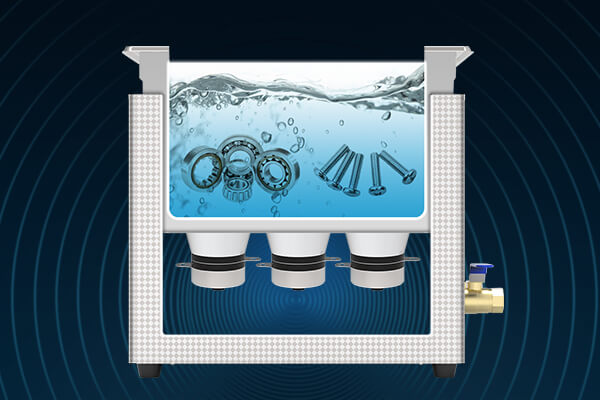
When Dish Soap Isn’t Enough: Why Specialized Ultrasonic Solutions Exist
Let’s imagine you’re cleaning a pair of prescription glasses with anti-reflective coating, or perhaps a set of stainless-steel carburetor parts caked in old oil. In both scenarios, dish soap might help with surface-level grime—but is it enough? More importantly, is it safe?
The truth is, dish soap is a general-purpose cleaner, formulated for removing food grease on ceramic and plastic. It wasn’t designed to clean titanium dental tools, oxidized brass, or diamond rings with delicate prong settings. And while it’s gentle on skin, it can sometimes be too gentle—or not precise enough—in an ultrasonic environment.
So, what does a professional ultrasonic cleaning solution offer that dish soap can’t?
Targeted Formulas for Specific Materials
Professional ultrasonic solutions are chemically tailored. There are separate formulas for:
- Metals: Like stainless steel, aluminum, brass, or copper. These solutions often include corrosion inhibitors or mild acidic agents to brighten the metal without etching it.
- Jewelry and stones: Specially buffered solutions that remove body oils and lotions without clouding softer stones like opal or damaging settings.
- Glass and optics: Cleaners with ultra-low residue, perfect for lenses and lab glassware that must remain optically clear.
- Medical and dental tools: Enzymatic formulas that break down proteins and biofilms without damaging instruments.
These aren’t just luxuries—they ensure safety, performance, and longevity. If you’re running a small jewelry workshop or optical clinic, using dish soap could actually cost you more over time through dull finishes, corrosion, or ineffective cleaning.
pH Balance and Material Compatibility
Dish soap typically leans slightly alkaline. This is fine for breaking down grease but may not be ideal for everything. Many ultrasonic solutions are engineered with specific pH ranges to ensure:
- No etching of glass or coatings
- No discoloration of plated metals
- No softening of adhesives or plastics
Here’s a quick comparison table to help illustrate:
| Solution Type | pH Range | Ideal For | Not Recommended For |
|---|---|---|---|
| Mild Dish Soap | 7.0–8.0 | Light oils on durable surfaces | Optical coatings, plated metals |
| Jewelry Cleaner (ultrasonic-safe) | 8.5–10.0 | Diamonds, gold, silver, body oils | Porous stones like turquoise |
| Optical Glassware Cleaner | 6.5–7.5 | AR-coated lenses, lab glass, microscopes | Metals prone to oxidation |
| Enzymatic Cleaner | 6.8–8.0 | Biological residue, dental tools | Non-biological residues |
| Industrial Degreaser | 10.0–12.0 | Engine parts, mechanical grease | Plastics, soft adhesives |
These pH values are not arbitrary—they affect cavitation, residue, and material integrity. That’s why professional use cases often avoid dish soap entirely.
Residue and Rinse-Off
One of the underappreciated traits of professional solutions is how well they rinse away. Many are designed for critical cleaning environments—semiconductors, optics, medical equipment—where even a micron-thin residue can cause problems. Dish soap, on the other hand, often leaves behind surfactant films that cling to nonporous surfaces unless rinsed very thoroughly.
Is Mixing Dish Soap with “Multi-Purpose” Ultrasonic Solutions a Good Idea?
It’s not unusual to see DIY cleaning enthusiasts pouring a dash of dish soap into a tank already containing some kind of “general-purpose ultrasonic solution.” The logic? More cleaners = more cleaning power. But in practice, this approach often backfires.
Let’s be clear: mixing chemical agents in ultrasonic tanks is not only potentially ineffective—it can be harmful. Here’s why.
Chemical Incompatibility and Cavitation Interference
Every ultrasonic solution is carefully formulated to support the formation and collapse of cavitation bubbles. The surface tension, viscosity, and conductivity of the liquid all play a role. When you add dish soap into the mix, you might unintentionally:
- Alter the cavitation behavior, making the bubbles too large or too few.
- Reduce cleaning efficiency by interfering with the solution’s pH balance.
- Create foam, which dampens ultrasonic energy and limits penetration.
- Leave residues due to mismatched rinse profiles of the different detergents.
You might get the illusion of stronger cleaning from the foam or fragrance, but what’s really happening is a reduction in precision and consistency.
Safety Concerns: The Myth of “The More the Better”
Mixing cleaning agents that weren’t designed to work together can also produce unexpected chemical reactions. While this is rare with household dish soaps, it becomes more likely when stronger alkaline or enzymatic cleaners are involved. Some combinations may lead to:
- Increased fumes, especially in enclosed spaces.
- Accelerated wear on tank linings or transducers.
- Permanent discoloration of sensitive items like plastics or rubber seals.
In professional settings—optical labs, watchmaking studios, dental clinics—these risks are non-negotiable. Even at home, if you’re cleaning valuable items, it’s simply not worth the gamble.
So What Should You Do Instead?
If your goal is to remove multiple types of contamination—say, oil and biological debris—look for a professional ultrasonic solution that’s specifically multi-phase or enzymatic-plus-surfactant. These are carefully balanced and tested, unlike DIY mixes.
Alternatively, do it in stages:
- Pre-cleaning soak in warm dish soap and water (outside the ultrasonic tank).
- Ultrasonic cleaning with a properly diluted professional solution.
- Final rinse in distilled water or isopropyl alcohol depending on material.
This sequence respects the physics and chemistry of ultrasonic cleaning while giving you the best results.
Dish Soap vs. Professional Ultrasonic Cleaning Solutions: Which One Wins?
When it comes to cleaning solutions for your ultrasonic cleaner, it’s not a one-size-fits-all choice. Dish soap may be more accessible and economical, but it does have limitations. Let’s break this down clearly.
| Aspect | Dish Soap | Professional Cleaning Solution |
|---|---|---|
| Cleaning Power | Moderate; works well for light grease and oils | High; formulated for targeted removal of carbon, metal filings, oils, or biological residue |
| Foaming Control | Can foam excessively if overdosed | Engineered to be low-foaming, cavitation-friendly |
| Material Safety | Safe for most household items when diluted | Designed for specific materials (e.g., metals, plastics, glass) with clear usage labels |
| Environmental Impact | Often biodegradable and non-toxic | Many are eco-safe, though industrial degreasers can be harsher |
| Cost and Accessibility | Very cheap and widely available | More expensive, usually ordered online or through suppliers |
| pH Range | Neutral to mildly alkaline (pH 7–9) | Comes in acidic, neutral, or alkaline varieties (pH 3–12), depending on application |
If you’re just cleaning your glasses, jewelry, or coins at home once in a while, a tiny drop of dish soap will do the trick. But if you’re cleaning carburetors, dental tools, printed circuit boards, or surgical instruments, you’ll want something purpose-built. Some tasks are just too demanding for consumer detergents, no matter how mild or efficient they seem on the surface.
Final Thoughts
Using dish soap in your ultrasonic cleaner isn’t inherently wrong—it’s just about understanding its strengths and limits. With careful dilution, short cleaning cycles, and attention to material compatibility, dish soap can be surprisingly effective for simple, routine cleaning jobs.
But when precision, safety, or deeper grime is on the line, professional-grade ultrasonic cleaning solutions earn their place. Just like you wouldn’t wash your silk dress with floor cleaner, your ultrasonic cleaner deserves the right match depending on the job.
Ultimately, the goal is to care for your items, your cleaner, and your time. Whether you go with a few drops of dish soap or invest in a specialized formula, what matters most is knowing why you’re choosing it—and using it wisely.


